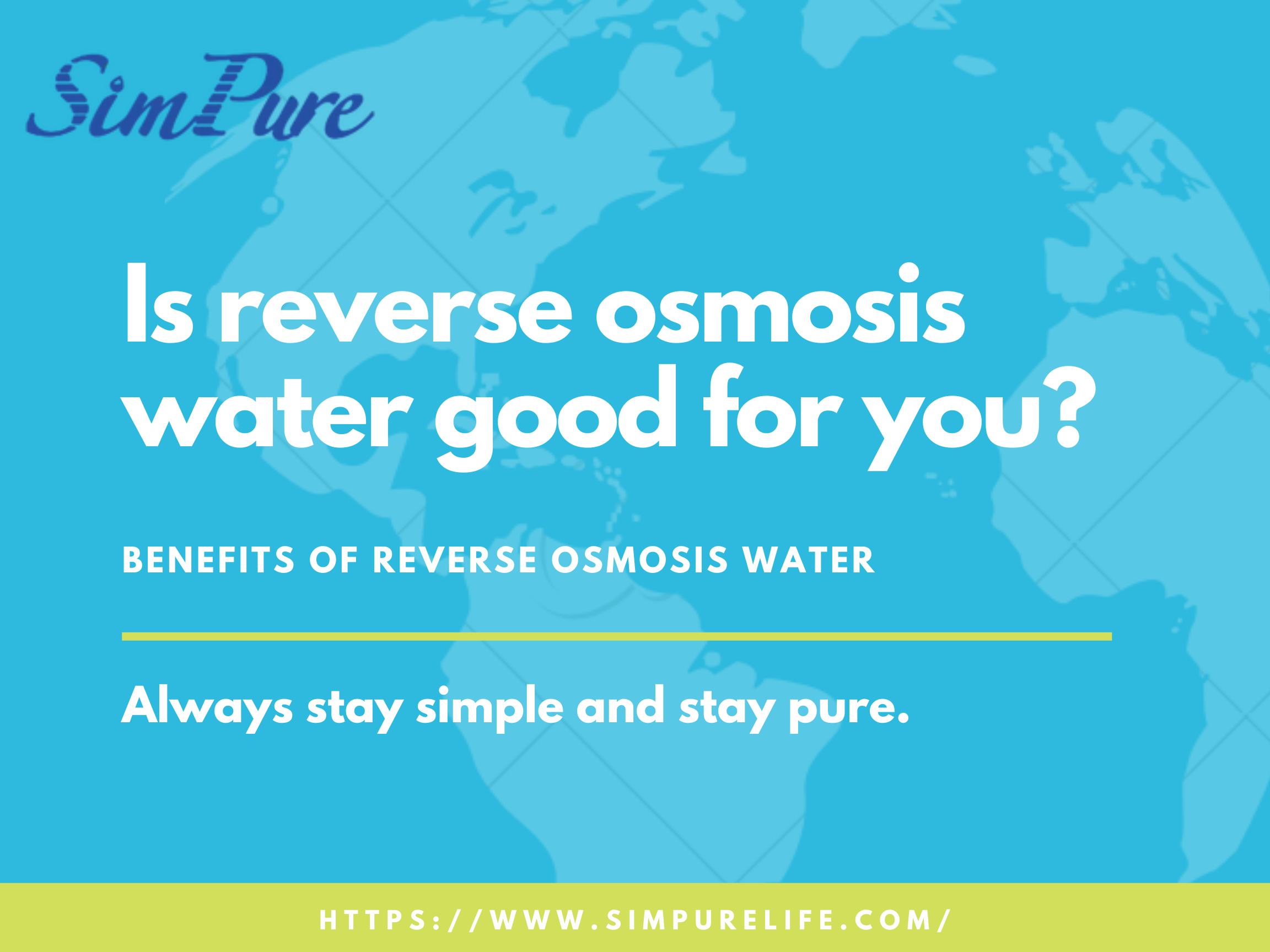Reverse osmosis water is generally considered safe and healthy to drink. It removes contaminants, leaving nearly pure water.
Reverse osmosis (RO) is a water purification technology that has gained widespread acclaim for providing high-quality drinking water. By forcing water through a semi-permeable membrane, RO systems strip out dissolved solids, harmful chemicals, and microbes. This process addresses the need for clean drinking water in areas where tap water might not meet health standards.
RO-filtered water often tastes fresher and cleaner as it is free from chlorine and other chemicals commonly found in municipal water supplies. Home and commercial RO systems offer a reliable way to ensure the water you drink supports your well-being.

The Basics Of Reverse Osmosis Water
Reverse osmosis is a popular method for purifying water. This process filters unwanted substances from water. The main aim is to make the water safe and clean for drinking. It involves several key components.
| Pre-filtration | Removes sediment and chlorine. |
| RO Membrane | The core part that filters small particles. |
| Storage Tank | Holds the filtered water. |
| Post-filtration | Polishes water before use. |
| Drain Line | Carries away impurities. |
| FAucet | The end point for access to clean water. |
These components work together to ensure purity. The result is tasty and healthy water to enjoy. By removing impurities, the system keeps you safe from contaminants.
Reverse Osmosis Water On Health
Reverse Osmosis (RO) water is free from contaminants and impurities.
It removes harmful substances like lead and arsenic.
Drinking RO water can reduce the risk of certain diseases.
It is also beneficial for people with weak immune systems.
Comparing Ro Water With Tap And Bottled Water
Reverse Osmosis (RO) water has different mineral content when compared to tap or bottled water. RO systems remove most minerals, unlike tap water which retains them. Some bottled waters even add minerals for taste. This leads to variations in mineral levels between these water types.
Considering taste and purity, RO water is often preferred for its clean, pure flavor. It is because RO removes impurities and contaminants that can affect the taste. Tap water can have slight flavors of chlorine or other chemicals, while some bottled waters have a distinct mineral taste.
Environmental considerations show a clear distinction. RO systems at home could reduce plastic waste, as opposed to buying bottled water. Yet, they waste water during the filtration process. Tap water has the lowest environmental footprint, with no need for bottles or excessive water use.
Ro Water And Your Daily Intake
Drinking reverse osmosis (RO) water ensures the water is free from contaminants. Yet, RO water has fewer minerals than some other waters. Kids and adults need minerals for their bodies to work well. People can get minerals from foods like fruits, vegetables, and nuts.
Our bodies also need water to stay healthy. RO water is very pure and can help the body stay hydrated. Being hydrated is key to staying energetic and healthy. RO water can be a part of getting enough water each day. Be sure to eat mineral-rich foods to balance your diet.
Advanced Considerations In Ro Systems
Reverse osmosis (RO) water may lack essential minerals like calcium and magnesium. These are vital for health. Many RO systems now include remineralization stages. This stage puts minerals back into the purified water. People enjoy water with a natural taste and added health benefits.
Innovative RO technologies strive to enhance water quality. Some systems use UV lights to kill bacteria and viruses. Others feature energy-saving techniques. A goal is often to minimize water waste. Keeping water safe and clean is top priority

Making An Informed Choice
Assessing your water needs is vital before choosing a reverse osmosis (RO) system. Different households require varied water purification levels depending on their specific needs. Users must first test their tap or well water to understand the contaminants present. This information guides what type of RO system would suit them best.
An appropriate home RO system should remove undesired elements while maintaining essential minerals. It is important to compare systems to find one that balances purification with mineral retention. Size, water production speed, and waste ratio are also key features to consider. Always ensure the chosen system meets certification standards for safety and performance.

Frequently Asked Questions For Is Reverse Osmosis Water Good For You
What Is Reverse Osmosis Water?
Reverse osmosis water is filtered water that has undergone a purification process. This process removes contaminants and dissolved minerals from the water by using a semipermeable membrane. The end result is high purity water.
Does Reverse Osmosis Water Benefit Health?
Yes, reverse osmosis water can benefit health. It effectively removes impurities and harmful contaminants. This leads to cleaner water for consumption, possibly reducing the risks associated with toxins and heavy metals.
Are There Minerals In Reverse Osmosis Water?
Reverse osmosis water has most of its natural minerals removed during the filtration process. This results in demineralized water, which some may supplement with additional minerals for improved taste and health benefits.
Can Drinking Reverse Osmosis Water Cause Harm?
Drinking reverse osmosis water is generally considered safe. However, because it lacks minerals, some people may experience a flat taste or require additional mineral intake from other sources to compensate.
Conclusion
Ensuring proper hydration is vital for our health, and reverse osmosis water can be a pure and safe choice. By removing contaminants, it offers a clean option for drinking. Remember, balance is key, as this process also strips away minerals.
Regularly testing and mineral supplementation can make reverse osmosis water an excellent addition to a healthy lifestyle. Drink wisely for your wellbeing.

